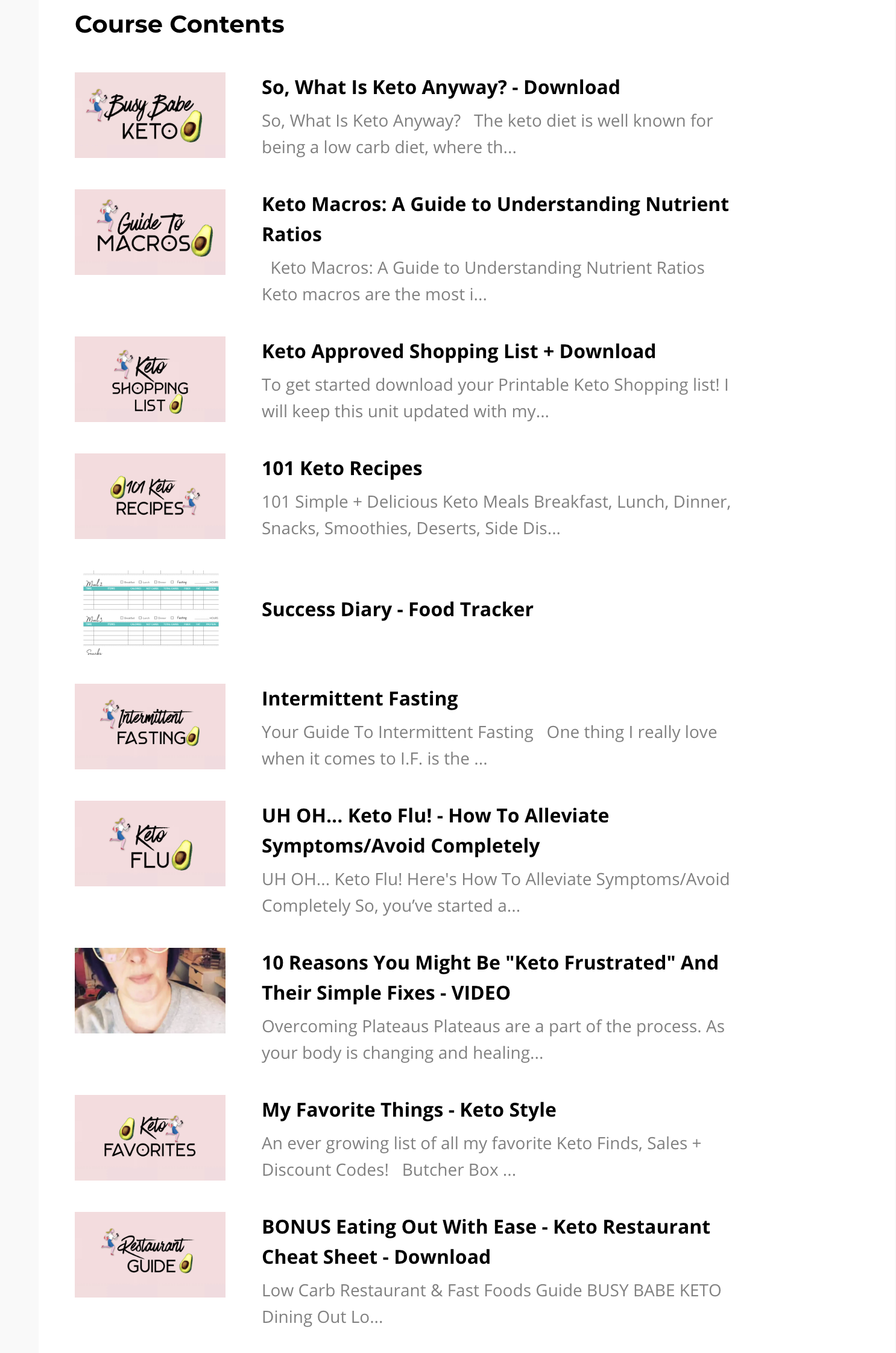The ‘dirty’ little secret of the keto diet for beginners. How women can start a simple ketogenic lifestyle.
Join The Community!
Support, resources + coaching to achieve your goals and elevate your busy lifestyle!
Let’s talk about the ‘dirty’ little secret of keto, I promise to keep it ‘clean’. (My full Keto guide is included below for more in-depth information)
So, what is keto or anyway?
Restricting (NOT eliminating) carbs to put your body into ketosis — a metabolic state where you burn fat, not glucose, for fuel.
Clean keto diets focus on organic vegetables, grass-fed meat and butter, and healthy fats like coconut oil and olive oil, while dirty keto lets you wallow in pork rinds and Cheez Whiz.
Let me eliminate a common misconception: to lose weight on Keto a calorie deficit IS necessary. Ok? Ok.
My favorite macro calculator and daily tracker is “Keto Diet” - it has free functionally and options to upgrade for more detailed tracking. Simply enter your personal information (weight, height, activity level...) and your wellness goals and this app will calculate your specific macros.
Macros is basically shorthand for macronutrients, a term used to describe the three key food groups we all require for our bodies to function: carbohydrates (to fuel energy), fats (to keep you satiated) and proteins (to build and repair muscle).
• Macro ranges for women on a Keto diet:
70/80% fats
20/25% protein
5/10% net carbs
One of my biggest secrets on Keto (and even when I’m not doing Keto) is how I make my coffee! - My favorite creamy add-ins boost my brain function/energy, blast away my belly fat and add LIFE to my skin while I lose weight. (This momma doesn’t want sagging boobs, butts and tummies as a result of rapid weight loss!)
So, What Is Keto Anyway?
The keto diet is well known for being a low carb diet, where the body produces ketones in the liver to be used as energy. It’s referred to as many different names – ketogenic diet, low carb diet, low carb high fat (LCHF), etc.
When you eat something high in carbs, your body will produce glucose and insulin.
•Glucose is the easiest molecule for your body to convert and use as energy so that it will be chosen over any other energy source.
•Insulin is produced to process the glucose in your bloodstream by taking it around the body.
Since the glucose is being used as a primary energy, your fats are not needed and are therefore stored. Typically on a normal, higher carbohydrate diet, the body will use glucose as the main form of energy. By lowering the intake of carbs, the body is induced into a state known as ketosis.
Ketosis is a natural process the body initiates to help us survive when food intake is low. During this state, we produce ketones, which are produced from the breakdown of fats in the liver.
The end goal of a properly maintained keto diet is to force your body into this metabolic state. We don’t do this through starvation of calories but starvation of carbohydrates.
"How Does A Keto Diet Work?"
Macronutrients and Keto
The general guideline for keto is high fat, moderate protein, low carb. So what exactly does that entail? I want you to know what you should be eating and why.
Generally, macros in a Keto diet ranges from:
70-80% of calories from fat
20-25% of calories from protein
5-10% of calories from carbs.
So if you are eating 1500 calories a day, you should be consuming:117 grams of fat
92 grams of protein
20-25 grams of net carbs (subtract grams of fiber from grams of carbs consumed)
You can easily adjust these goals in MyFitnessPal, Senza, KetoDiet, etc (they do all the math for you!).
The Golden Ratio:
A good ratio to go by when keeping tabs on your daily carb intake is the following:
1.5g Net Carbs Per 100 calories
How Do I Get To 70% Fat?
It can definitely be a tough task at first, but it gets easier over time. Here are some quick and easy ways to up your fat:
•Buy Fattier Cuts of Meat – Simple right? Switch from chicken breast to thighs/wings/legs. Go for the 80/20 ground beef instead of the 99% lean. Bacon is your friend. Your crispy, delicious friend.
•Add Fat to Veggies – Don’t like broccoli? Try drenching it in healthy oils, grass fed butter or cheese! Seriously, start viewing veggies and sponges for all the delicious fats you’ll be eating on the regular.
•Fat Bombs – Fat bombs are small, pre-made snacks that pack in a lot of fat and very little protein or carbs. These are a great way to up your fat intake if you’re struggling.
"What do I eat?"
My Top Tips for Keeping It Simple
— Go for quality, not quantity. You don’t need to buy everything you see to start out on a keto diet. I love Keto because it’s simple, so stick with that mindset! Get a nice cut of meat, a good quality butter & some dark green veggies – you’re done and you won’t feel like you’re dieting!
— Complicated recipes are deceiving. Recipes with 15+ ingredients are fun to make sometimes, but on the daily, it’s unrealistic. Keep the ingredient countdown and you’ll be happy
— Stop with the dupes (at least at first). When I first started the diet, I saw recipes to keto-fy all my favorites like bread, fast food & rice. Again, this is fine once in awhile, but on your daily grind, just stick to the basics to make you sane and your wallet happy.




